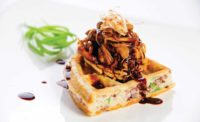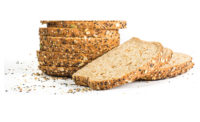Snack Food & Wholesale Bakery was recently able to talk to Ronald Falkenberg, regional sales director USA and Canada, DIOSNA, about grain cooking for baked goods.
Liz Parker: What are the benefits of cooked grains for baked goods?
Ronald Falkeberg: During soaking, grains just take only a little amount of water during soaking. Grains stay grey and doesn’t expand.
If grain get cooked they take much more water during swelling. The grains get bigger and more visible in the baked goods also they are softer. The color changes from grey to brown.
LP: How do the grains improve product quality?
RF: The bread has a longer shelf life and freshness because of the higher water content.
LP: How does grain cooking work?
RF: For 100 pounds of grains we use 300-350 pounds of water for cooking. We fill up the DIOSNA grain cooking kettle first with cold water and add the grain. The grain and water get mixed gentle with the integrated agitator
The optimal temperature is 85 degrees Celsius, or 185 degrees Fahrenheit, for one to two hours, depends on the grain.
LP: How can cooked grains extend natural freshness and frozen storage stability of baked goods?
RF: The cooked grains extend natural freshness and frozen storage stability of baked goods because they retain a huge amount of water which was taken from the cooking process.
LP: How can cooked grains improve cost?
RF: The dough yield is up to 10% bigger compared to a dough with uncooked grains.
Stay tuned for our December Ingredients article with a focus on Grains—it will be linked here once it is published online.







